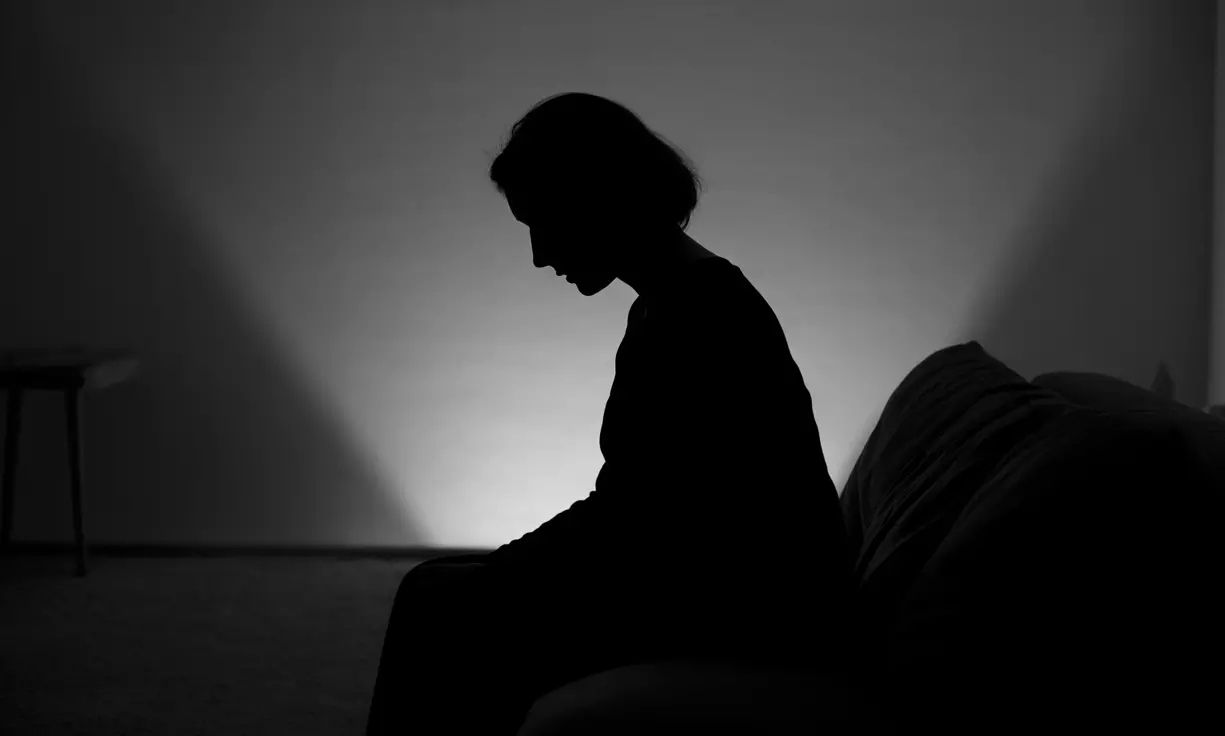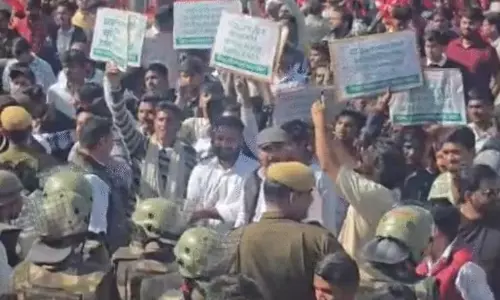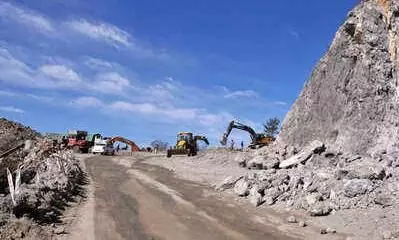
Uttarakhand: Temple development projects as main agenda; environment to take back seat
text_fieldsChar Dham project area
As Uttarakhand gears up for elections on February 14, with the results to be announced on March 10, political parties have also started preparing their manifesto aimed atwooing voters. From the ruling BJP trying hard to convince people that they have fulfilled all the promises made during 2017 and will continue to work for the people, the Congress has been trying hard to highlight issues like Covid mismanagement and unemployment.
With the BJP planning to fight elections under Pushkar Singh Dhami and the Congress relying on Harish Rawat, it will be difficult for the ruling party to gain back power. However, one thing that has become clear is thanks to the focus on temples, the BJP, the Congress, and the Aam Aadmi Party (AAP) all trying to keep the issue of 'Hindutva' as a central theme. While Congress's Harish Rawat visited Kedarnath immediately after the visit of Prime Minister Narendra Modi, the AAP has promised that Uttarakhand will be made the 'spiritual capital' of the world for Hindus if it comes to power.
Another issue related to temples is the formation and the dissolution of the Char Dham Devasthanam Board (CDDB). The CDDB which was constituted under the Char Dham Devasthanam Management Act, 2019 to look after the activities of Gangotri, Yamunotri, Kedarnath, and Badrinath shrines and the temples affiliated to them was taken back by the government after the priests were agitating against it. The bone of contention became the shrine property which would have come under the jurisdiction of CDDB if it was implemented and the priests were afraid of losing their rights over the land.
After a long agitation by the priests and even threatening the BJP government of not supporting their candidates in the upcoming elections, the CDDB was dissolved by the Pushkar Dhami-led government. He even tweeted that "The government has decided to take back the Devasthanam Board Act keeping in view peoples' sentiments, rights of the tirth purohits and those related to Char Dham, based on the Manohar Kant Dhyani Committee Report." But whether this will be able to translate into votes or not is something only time will tell.
Covid mismanagement and the fake test scandal
During the second wave of Covid-19 when the whole country was disturbed by the dearth of oxygen and the mismanagement leading to the spread of the virus, Uttarakhand was no exception. Further adding to this was the mammoth task of organising the Kumbh Mela, a major pilgrimage and festival in Hinduism celebrated every 12 years.
It was only during this Kumbh Mela that the Covid rules like wearing a mask and social distancing were blatantly violated as lakhs of devotees choked the ghats of Haridwar. Even the number of infections soared after the 'shahi snans', an important event of Kumbh Mela where religious leaders take a dip in the holy Ganges. It was because of such instances that the Kumbh Mela earned the tag of a 'Covid super spreader'. It was stopped only after the call of Prime Minister Narendra Modi who asked religious leaders of various 'akhadas' to wind up the event and requested that the Kumbh Mela be celebrated symbolically.
It was only during this time that the scam regarding one lakh fake Covid tests happened and the Opposition started targeting the government regarding it. However, the government has been thumping its back as they ramped up the medical facilities during the coronavirus outbreak. From increasing the number of oxygen plants, oxygen cylinders, and hospital beds, BJP claims that not only were they able to control the outbreak of the virus but also advanced their medical facilities.
Construction of roads and environmental degradation
In the month of November, as the Prime Minister visited the Kedarnath shrine, laid the foundation stone of projects worth Rs.409 crores, and inaugurated the statue of Adi Shankaracharya, it became clear that temples were going to play a major role in Uttarakhand elections.
While laying the foundation stone, Prime Minister also talked about the under-construction Char Dham all-weather road and the Rishikesh-Karnaprayag railway link projects thereby hailing the development agenda of the BJP government. But environmental experts have been continuously raising their concerns about the damage that it will be causing to the ecosystem of the area.
As the construction projects are being built around the fragile Himalayan ecosystem, environmental experts have been pointing out the potential damage that such a development project could cause. The case even went to the Supreme Court after which a High-powered Committee (HPC) was set up to study the ecological damage of this project.
On one hand, where the environmentalists argue about the landslides that this project can cause, on the other the government has focused upon the necessity of such a project which will not only sustain the Char Dham yatra but at the same time will be crucial for transporting military equipment. After the HPC submitted its report, it was decided that the construction work will go on with the carriageway width limited to 5.5 meters.
Uttarakhand is also prone to natural disasters, with the intensity of these incidents also increasing every year. In February 2021 when a glacier broke off in Chamoli district demolishing the 13.2 MW Rishi Ganga hydel project at Raini village and also slamming into the NTPC's 520 MW Tapovan-Vishnugad hydroelectricity project, close to 204 people went missing. Even in the month of November when heavy rainfall washed away houses, railway tracks, and bridges, close to 80 people died.
In such a scenario, it becomes necessary to carefully study the scientific evidence regarding the dangers of environmental projects and then decide upon any construction work. While national security cannot be compromised, it also becomes our responsibility to take the path of sustainable development in order to minimize man-made disasters.











